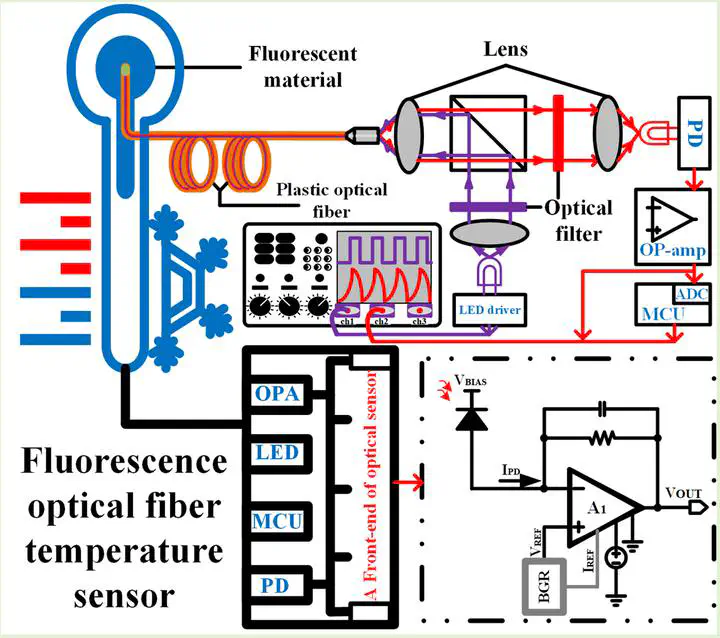An Integrated Fluorescence Optical Fiber Temperature Sensor Front-End Based on a Ring-Gate-Isolated Photodiode

Abstract
Fluorescence optical fiber temperature sensors have found widespread use in harsh environments with electromagnetic interference, high voltages, flammability, and combustibility due to their excellent insulating properties. However, conventional fluorescence detection systems are constructed from discrete photodiodes and other front-end circuit chips, which cause bulky size, inferior detection efficiency, and degraded signal-to-noise performance. To address these issues, an integrated optical front-end circuit for fluorescence detection was proposed. The front-end circuit monolithically integrated a ring-gate-isolated photodiode (RGI-PD) device, a transimpedance amplifier (TIA), and a bandgap reference (BGR) circuit. The RGI-PD enabled the detection of the fluorescence afterglow signals, while the TIA circuit converted the photocurrent generated by the RGI-PD into a measurable photovoltage output. The RGI-PD utilized a P-well guard ring structure to prevent edge breakdown by isolating the avalanche region from the shallow trench. The dummy ring-gate created an inverted pyramid hole profile, focusing the electric field on the planar junction to enhance photodetection, which reduced trapping effects and dark counts. The proposed front-end circuit was fabricated using a standard 0.18 μm bipolar CMOS DMOS (BCD) process. The measurement results demonstrated that the avalanche breakdown voltage (BV) of the RGI-PD was 13.05 V. The front-end circuit achieved a responsivity of 17.29 A/W at 500 nm wavelength, under a 13.88 V reverse bias voltage applied on the RGI-PD. Moreover, the front-end’s dark voltage measured 0.908 V, with an optimal temperature coefficient (TC) of 41.01 ppm/°C within the temperature range of −40 °C to 85 °C. The proposed front-end circuit was suitable for fluorescence fiber temperature sensing applications.